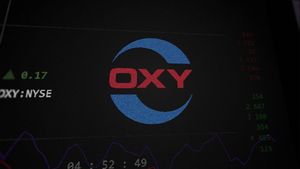
The financial markets are currently experiencing a period of profound divergence, characterized by both soaring optimism and persistent underlying anxieties. As of October 2025, major U.S. stock indices are shattering records, largely propelled by an "insatiable appetite" for artificial intelligence (AI) innovation and the growing expectation of further interest rate cuts by the Federal Reserve. This bullish sentiment, however, coexists with an elevated level of market volatility, as macroeconomic pressures, geopolitical events, and shifting trade policies continue to create significant headwinds for specific sectors and individual companies. The result is a highly selective market where numerous stocks are hitting new 52-week highs, while others are simultaneously plumbing new 52-week lows, reflecting a complex landscape of opportunities and risks for investors.
This dynamic environment suggests that while the broader market indices may present a picture of robust health, a deeper examination reveals a more nuanced reality. Growth and investor confidence are concentrated in specific, high-performing sectors, particularly technology, leaving other areas vulnerable to the prevailing economic uncertainties. The immediate implication is a market poised for increased fluctuations, with the upcoming Q3 earnings season acting as a crucial litmus test for corporate resilience and the sustainability of the current rally.
Divergent Fortunes: A Market of Extremes
The current market climate in October 2025 is a testament to the powerful forces shaping global finance. Throughout 2025, market volatility, as measured by the VIX index, has remained notably elevated, averaging 27.5—significantly above typical stable levels. Early in the year, the S&P 500 reached all-time highs in January, only to experience a sharp sell-off in April following aggressive tariff announcements, which saw the VIX spike to 52, a level reminiscent of the March 2020 downturn. However, a subsequent "pause" in tariffs and a general market recovery enabled equities to recoup losses and establish new record highs for the S&P 500 (SPX) and Nasdaq Composite (IXIC) by June.
September 2025 defied historical trends, witnessing an unusually strong rally, especially in the technology sector, fueled by robust AI demand and growing expectations of Federal Reserve rate cuts. This momentum has carried into October, with major U.S. stock indices continuing their upward trajectory despite an ongoing U.S. government shutdown. The market appears to be prioritizing the transformative potential of technological growth and favorable monetary policy over political gridlock.
However, this broad market strength masks significant disparities at the individual stock level. Many large-cap sector leaders, particularly those linked to AI and technology, are trading at or near their 52-week highs. Companies demonstrating strong fundamentals, operational resilience, and sustained investor confidence are benefiting from this trend. For instance, Veeco Instruments Inc. (NASDAQ: VECO) recently surged to a 52-week high of $34.41, marking a 61% gain over the past six months, reflecting strong confidence in its market position, likely tied to semiconductor and advanced materials processing. On September 29, 2025, the NASDAQ reported 131 new 52-week highs, indicating concentrated strength in specific areas.
Conversely, other companies are struggling to navigate the complex economic landscape, with their stock prices dipping to 52-week lows. Simply Good Foods Co. (NASDAQ: SMPL) recently touched a new 52-week low of $24.29. Despite possessing strong underlying fundamentals, including robust liquidity and revenue growth, and generally positive analyst outlooks, the company has faced a challenging year amidst broader market fluctuations and evolving consumer preferences. The NASDAQ also reported 57 new 52-week lows on the same day, highlighting the selective nature of the current market rally. This divergence underscores that while powerful macro themes are driving some stocks to unprecedented heights, others are grappling with specific industry headwinds, competitive pressures, or a lack of alignment with current investor enthusiasms.
Companies on the Cusp: Winners and Losers in a Volatile Market
The current market volatility and the simultaneous occurrence of 52-week highs and lows create a clear delineation between potential winners and losers. Companies deeply entrenched in the AI ecosystem and those demonstrating robust, resilient business models are poised to benefit significantly. Technology giants and innovators, particularly those at the forefront of AI development and deployment, are experiencing increased investor confidence and capital inflows. This includes not only software and chip manufacturers but also companies that effectively leverage AI to enhance their products, services, and operational efficiencies. Their strong fundamentals, consistent cash flow generation, and perceived growth potential, even if accompanied by elevated valuations, are attracting sustained buying interest.
Conversely, companies facing intense competition, exposure to volatile commodity prices, or those struggling to adapt to changing consumer behaviors and macroeconomic pressures are more likely to find themselves on the losing end. Businesses with high debt loads, sensitivity to interest rate fluctuations, or those operating in sectors undergoing significant disruption may experience sustained downward pressure on their stock prices. The example of Simply Good Foods Co. (NASDAQ: SMPL) illustrates how even fundamentally sound companies can be impacted by broader market sentiment or specific industry challenges, leading to a disconnect between their intrinsic value and market valuation. Investors are increasingly scrutinizing balance sheets and growth prospects, punishing companies that show signs of weakness or an inability to capitalize on prevailing market trends. This selective approach means that merely being a public company is not enough; strategic positioning and adaptability are paramount.
Broader Significance: A Tech-Driven Market Amidst Global Shifts
This period of pronounced market divergence fits into broader industry trends marked by rapid technological advancement and ongoing global economic re-calibration. The "insatiable appetite" for AI is not merely a fleeting trend but a fundamental shift, akin to the internet boom, that is reshaping industries from healthcare to finance, manufacturing, and logistics. Companies that are early adopters or developers of AI technologies are not just experiencing growth; they are fundamentally altering competitive landscapes, potentially creating new monopolies or oligopolies in their respective niches. This AI-driven surge is creating a significant gap between these innovators and more traditional businesses, exacerbating the performance disparities seen in individual stock movements.
The potential ripple effects are substantial. Competitors to AI leaders face immense pressure to innovate or risk obsolescence. Partners within the AI supply chain, from chip foundries to data center operators, are seeing unprecedented demand. Regulatory bodies are also increasingly scrutinizing the rapid expansion of AI, with discussions around data privacy, algorithmic bias, and market concentration gaining traction. This could lead to new policy frameworks that influence the operational freedom and growth trajectories of key players. Historically, periods of intense technological disruption have always led to market polarization, where new industries emerge rapidly while older ones struggle to adapt. The current environment echoes the dot-com era in its enthusiasm but is perhaps more grounded in tangible technological advancements, suggesting a more sustained impact. The ongoing U.S. government shutdown, while historically having minimal long-term economic impact, adds another layer of short-term uncertainty, potentially delaying crucial economic data releases and further contributing to investor apprehension.
What Comes Next: Navigating the Crossroads of Innovation and Uncertainty
Looking ahead, the market is poised for a continuation of its current dual narrative. In the short term, the upcoming Q3 earnings season will be a critical determinant of market direction. Investor focus will intensely shift to corporate performance, seeking validation for the lofty valuations of growth stocks and signs of resilience from companies battling headwinds. Strong earnings reports, particularly from the technology sector, could further fuel the AI-driven rally, while any disappointments could trigger significant corrections, especially in overvalued segments. The historical tendency for increased volatility in October, coupled with key macroeconomic data releases and central bank communications, suggests that market fluctuations are likely to intensify.
In the long term, the trajectory of AI innovation and the Federal Reserve's interest rate policy will remain paramount. Continued advancements in AI and further rate cuts could sustain the bullish sentiment, pushing equity valuations higher and potentially drawing more capital into growth-oriented investments. However, the market also faces potential challenges, including persistent inflation, evolving global trade policies, and the increasing scrutiny from regulators regarding AI's societal and economic impact. Companies will need to strategically adapt, either by aggressively investing in AI capabilities, diversifying their business models, or focusing on niche markets where traditional strengths still hold sway. Opportunities may emerge in undervalued sectors or companies with strong fundamentals that have been overlooked in the AI craze, presenting potential value plays for discerning investors. Scenarios range from a continued tech-led bull run, albeit with periodic corrections, to a broader market rebalancing if economic headwinds prove more persistent than anticipated.
Wrap-up: A Selective Market Demands Strategic Acumen
In summary, the financial markets in October 2025 are characterized by a striking paradox: record-breaking highs for major indices driven by AI optimism and anticipated rate cuts, coexisting with significant volatility and a clear divergence in individual stock performance. The key takeaway is that this is a highly selective market where broad market movements often mask the underlying struggles and triumphs of individual companies. While the allure of AI innovation is undeniably powerful, propelling many companies to new 52-week highs, macroeconomic pressures and industry-specific challenges are simultaneously pushing others to 52-week lows.
Moving forward, investors must exercise strategic acumen. The market's current trajectory suggests that while the overall sentiment remains bullish due to technological tailwinds and favorable monetary policy expectations, the path will likely be marked by increased fluctuations. Investors should watch closely for Q3 earnings reports, which will provide crucial insights into corporate health and the sustainability of current valuations. Furthermore, monitoring the Federal Reserve's communication regarding interest rates and any new regulatory developments concerning AI will be essential. In this environment of anticipated volatility and selective performance, maintaining a resilient and diversified portfolio, focusing on companies with robust fundamentals, and understanding the nuanced impacts of technological shifts will be paramount for navigating the months ahead.
This content is intended for informational purposes only and is not financial advice






